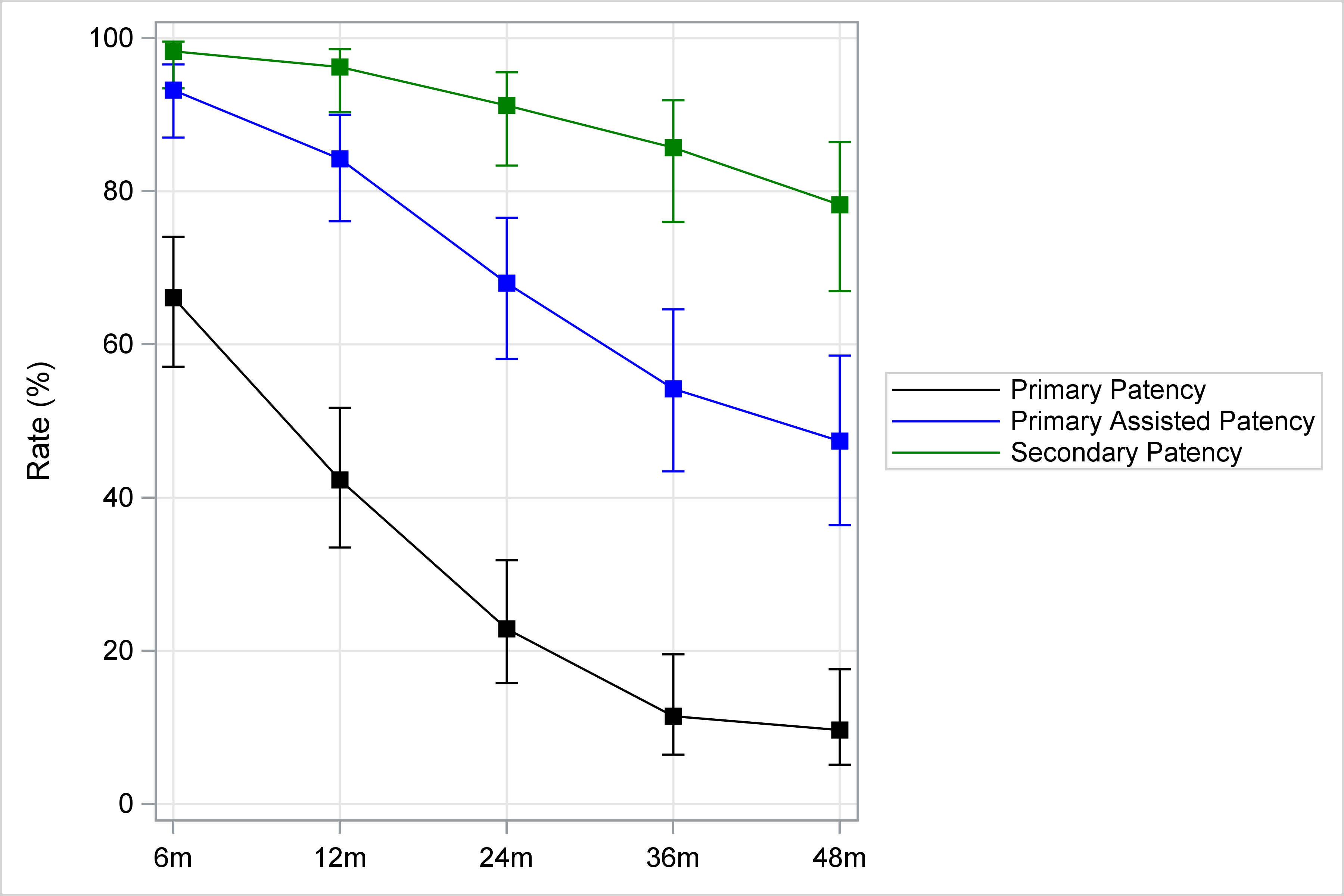OBJECTIVES: Vascular access is difficult in patients without suitable arm veins and prior graft infections. The use of femoral vein translocation for complex hemodialysis access may be associated with low infection rates and high patency rates. The largest case series in the literature only consists of 30 cases. The objective of this study is to determine the infection incidence, primary patency, primary-assisted patency, and secondary patency rates among femoral vein translocations.
METHODS: A retrospective chart review was performed on all patients who underwent femoral vein translocation by a single vascular practice over a 10-year period, 2013-2023. Study variables included length to last follow up (months), prior access, prior graft infection, comorbid conditions, primary patency, primary-assisted patency, secondary patency, postoperative steal syndrome, postoperative graft infection, postoperative harvest site complication, and postoperative compartment syndrome.
RESULTS: A total of 131 femoral vein translocations were performed over the ten-year period; 126 patients (46% male, 68% female) with a mean ± SD age of 52 ± 14 years; BMI 29 ± 8 had follow up data and were included for analysis. The median (IQR) follow up was 46 (19-72) months. The mean number of prior permanent accesses was 2, range 0-5. Forty-eight percent of patients had prior graft infections. The primary, primary assisted, and secondary patency rates were 66%, 93%, 98%, respectively, at 6 months; 42%, 84%, 96% at 12 months; 23%, 68%, 91% at 24 months; 11%, 54%, 86% at 36 months; and 10%, 47%, 78% at 48 months (Figure 1). The incidence of postoperative steal syndrome requiring an additional procedure was 15%. The incidence of postoperative access infection requiring access excision was 5%. The incidence of postoperative harvest site complications requiring an additional procedure was 19%. Three patients developed compartment syndrome postoperatively, requiring fasciotomy.
CONCLUSIONS: Femoral vein translocation is associated with low infection rates and high long-term patency rates. Femoral vein translocation does have a significant risk for postoperative steal syndrome and thigh complications; however, it is a viable option for patients with repeated graft infections.

Figure 1: Patency rates of femoral vein translocation at 6, 12, 24, 36, and 48 months.